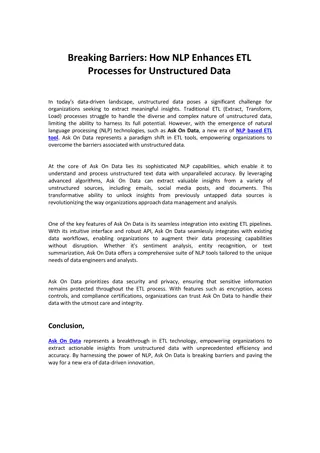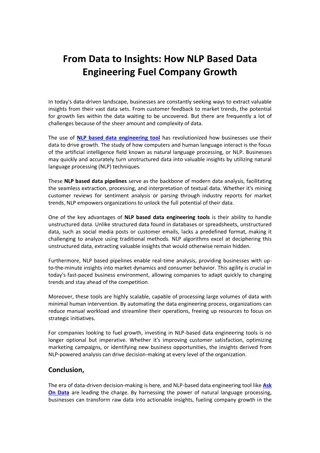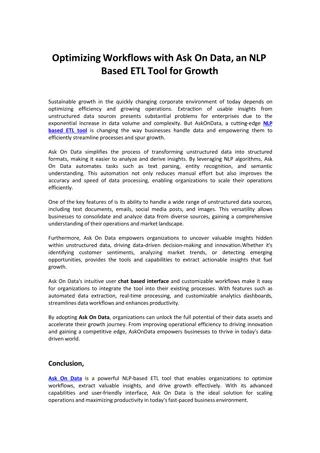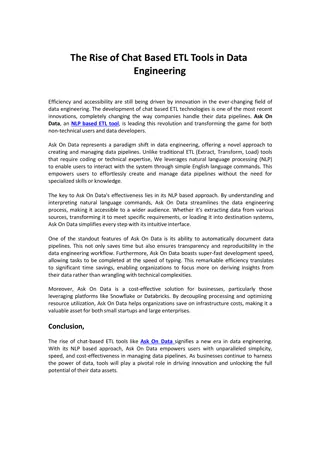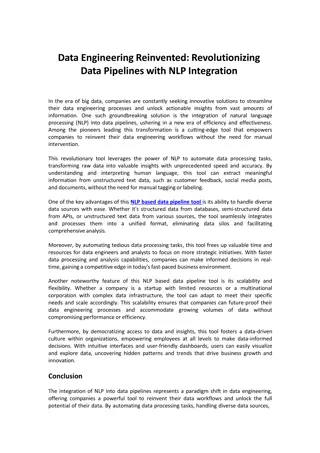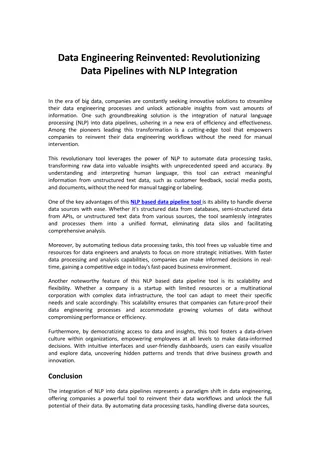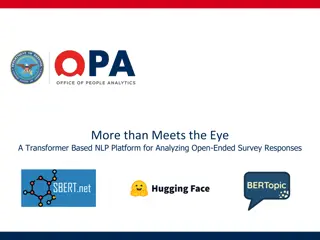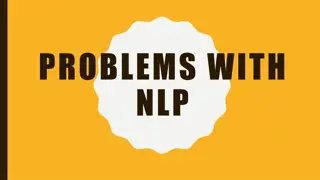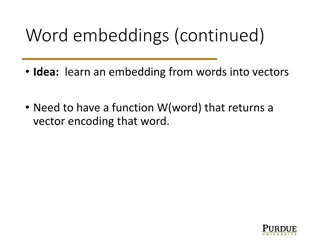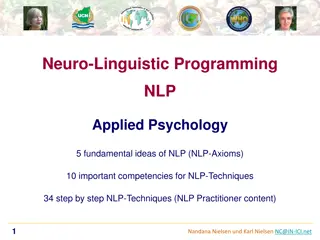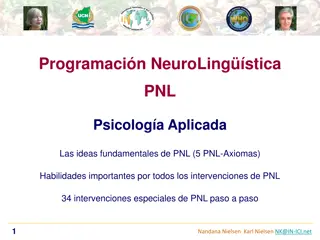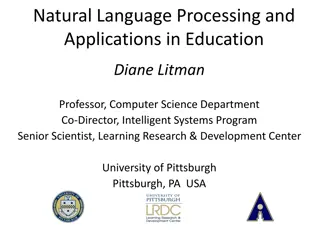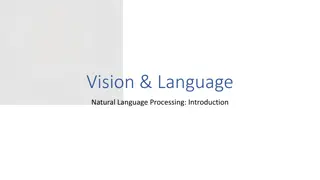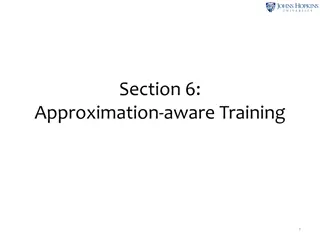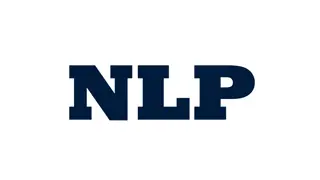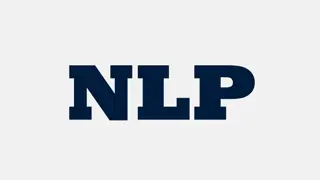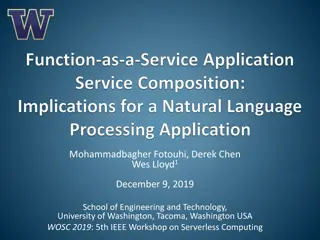What is NLP?
Discover the art and science of NLP to positively change behavior, enhance communication, influence elegantly, and achieve desired outcomes. Learn valuable personal, professional, and therapeutic skills to excel in various aspects of life.
Download Presentation

Please find below an Image/Link to download the presentation.
The content on the website is provided AS IS for your information and personal use only. It may not be sold, licensed, or shared on other websites without obtaining consent from the author. Download presentation by click this link. If you encounter any issues during the download, it is possible that the publisher has removed the file from their server.
E N D
Presentation Transcript
What is NLP? A guide by Kirsty Coulston Coaching4calm@gmail.com
Neuro Linguistic Programming (NLP) is the study of what we do in our heads when we create success. An art and science that shows us how to positively change human behaviour rapidly and easily with permanent results. A model of excellence
Why is learning NLP useful ? New personal skills and tools: Ability to communicate effectively Influence and negotiate elegantly The art of selling Discovering what people really mean Relationship building Coaching skills Therapeutic skills How to create business success Think differently and solve problems Effective decision making Leadership and management skill Earn more
Neuro:The nervous system (including the mind) through which our experience is processed via five senses. Visual -sight Auditory -hearing Kinesthetic -touch and feeling Olfactory -smell Gustatory -taste
Programming Linguistic The ability to discover and utilise the programmes that we run (our communication to ourselves and others) in our neurological systems to achieve our specific and desired outcomes. Language and other non-verbal communication systems through which our neural representations are coded, ordered and given meaning, Include : Pictures Sounds Feelings Tastes Smells
In other words, NLP is how to use the language of the mind to consistently achieve our specific and desired outcomes.
Lets become the best version of ourselves. Perception is projection We delete,distort and generalise 126 bps (Brain) 7 +/- 2 Chunks 12,000,000 bps
NLP techniques can change peoples states, behaviour and the results they are getting in their life. The problem is never the external event. It s the internal representation of that event. Cause and effect is a framework of thinking that is all about responsibility. It is about taking responsibility so you can hold on to your power rather than give it away, which will leave you feeling more empowered = > Cause Effect Empowerment
Most people live in the effect side of the equation, which is what happens externally. NLP enables us to live on the Cause side where we can create our own experience moment by moment. Which side are you on?
NLP Five principles for success 1 2 3 Know your outcome Take action Have sensory acuity 4 5 Operate from a physiology and psychology of excellence Have behavioural flexibility
The Presuppositions of NLP Convenient Assumptions 1. Respect for the other person s model of the world. 2. Behaviour and change are to be evaluated in terms of context and Ecology. 3. Resistance in a client is a sign of a lack of rapport. There are no resistant clients, only inflexible communicators. Effective communicators accept and utilise all communication presented to them. 4. People are not their behaviours (accept the person change the behaviour). 5. Everyone is doing the best they can with the resources they have available. Behaviour is geared for adaptation and present behaviour is the best choice available (every behaviour is motivated by a positive intent).
6. Calibrate on behaviour: The most important information about a person is that person s behaviour. 7. The map is not the territory (the words we use are not the event or the item they represent). 8. You are in charge of your mind, and therefore your results (and I am also in charge of my mind and therefore my results). 9. People have all the resources they need to succeed and to achieve their desired outcomes. 10. All procedures should increase wholeness. 11. Only feedback no failure. 12. The meaning of communication is the response you get. 13. The law of requisite variety. 14. All procedures should be designed to increase choice.
Language Section What is rapport? In NLP we define rapport as a state of responsiveness. Responsiveness means the person or people you are interacting with consciously and unconsciously respond to you and you therefore have the lead in the communication. Theory A. Communication is: 7% WORDS 38% TONALITY 55% PHYSIOLOGY When people are like each other, they like each other. Rapport is a process of responsiveness, not necessarily liking .
Process of Rapport - Mirroring and Matching WORDS (7%) PHYSIOLOGY (55%) Predicates (the words that we use to describe our inner world to the outside world) Posture Gesture Facial expression ; blinking Breathing Key words Common experience & association TONALITY (38%) Voice Tone (pitch) Tempo (speed) Timbre (quality) Volume (loudness) Content chunks
Frames A strategy to redirect a person's argumentative energy rather than overcome it. The agreement frame I appreciate and I respect and I agree and
Frames The purpose frame for what purpose Avoid using why it can be perceived as confrontational.
Perceptual positions Position 1 Seeing the world through our own eyes. Position 2 Standing in the other person s shoes. Position 3 Neutral observer



